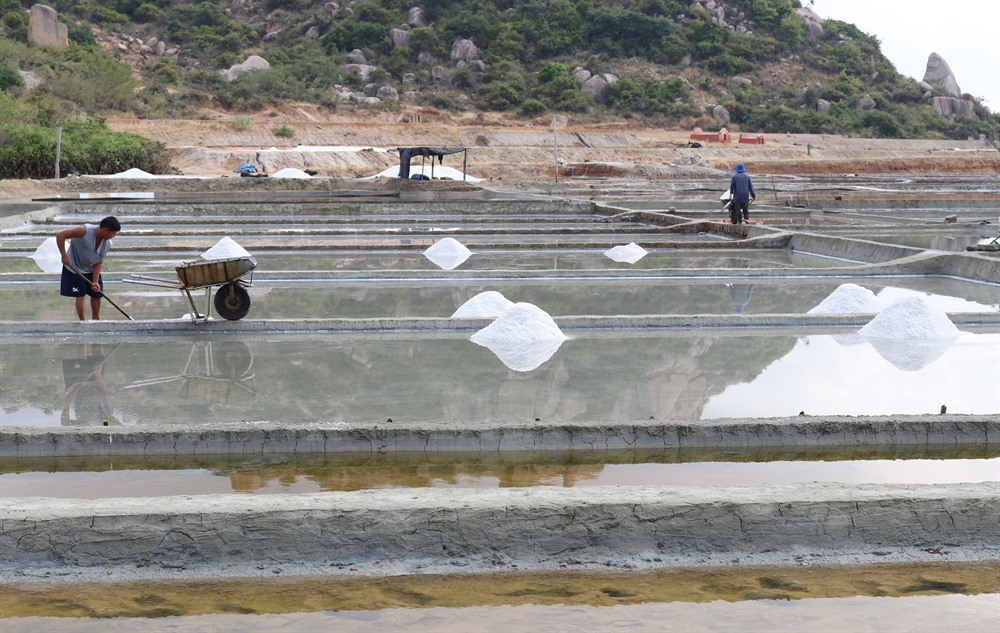 Society
Society

Salt farmers in Ninh Thuận Province, the country’s largest salt producer, are benefiting from a bumper harvest and high prices this year.
 |
| Salt being harvested in Ninh Thuận Province’s Ninh Hải District.– VNA/VNS Photo Nguyễn Thành |
NINH THUẬN — Salt farmers in Ninh Thuận Province, the country’s largest salt producer, are benefiting from a bumper harvest and high prices this year.
Traders have been buying salt produced in fields covered with plastic sheets at VNĐ 1,100 – 1,130 a kilogramme and traditional products at VNĐ900 – 1,100.
These represent an increase of VNĐ300 – 500 in prices since the end of last year.
Farmers have produced 10 – 15 tonnes per hectare per harvest because of favourable weather conditions.
In hot and dry weather it takes around one week from the time seawater is let into salt fields until harvest.
Nguyễn Văn Thành, who has an 8,000sq.m salt field in Ninh Hải District’s Nhơn Hải Commune, said his family has been harvesting 40 tonnes a month, fetching him an income of VNĐ30 million (US$1,290).
Ninh Hải, which has the largest salt producing area in the province, has more than 650ha of fields, according to the local Agriculture and Rural Development Division.
The south-central province has favourable natural conditions for producing salt with a coastline of 105km, hot weather year round and the lowest rainfall in the country.
Its rainy season only lasts from September to November.
It has more than 3,500ha of salt fields and targets around 300,000 tonnes of production this year.
To make salt production sustainable, province authorities have encouraged farmers to apply techniques such as using plastic sheets to cover the fields to produce cleaner salt.
This method helps improve yields by 15 per cent, according to the province Agriculture and Fishery Extension Centre.
Authorities have also enabled farmers and organisations to get soft loans to produce salt, set up co-operatives and build processing plants to produce cleaner salt and salt-related products.
They have built proper roads to fields in recent years to help transport salt easily. — VNS




